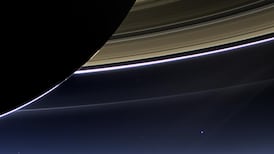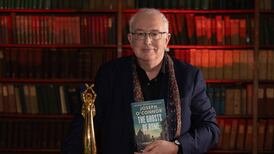The long-term future of Irish space travel seems universally transfixed by the swivelling seats in the UCD’s George Moore Auditorium on a frosty Friday evening as they wait – not always patiently – for a “fireside chat” with the short term future of Irish space travel to start.
“Come on! Why hasn’t it started yet? It was supposed to start 20 minutes ago. 20 minutes! When is it going to start? And where’s the fire?,” a young and bored boy repeatedly asks his mother as he ignores her whispered pleas to settle quietly into his moving chair.
He is one of an audience made up mostly of excited children who have assembled to hear from Dr Norah Patten, the woman aiming to boldly go where no Irish person has gone before and become the first Irish person to travel into space.
She is to be joined by her fellow astronaut Dr Shawna Pandya who hails from Canada and if all goes to plan, the two doctors will be joined by Dr Kellie Gerardi on Virgin Galactic’s commercial spacecraft Delta.
RM Block
They will travel into space to carry out research for the International Institute for Astronautical Sciences (IIAS) next year.
On-board the Delta spacecraft, the first all woman research team in space will focus on building on information gathered on a previous research space flight collaboration between Virgin Galactic and IIAS last year, testing novel healthcare technologies and looking at how fluids behave in low gravity.
As the children’s chatter reaches a crescendo and more of them start swinging wildly in their seats, Prof Kate Robson-Brown, UCD’s vice-president for research innovation and Impact brings calm to the proceedings by announcing that the spacewomen are in the building.
Seconds later the two doctors stride down the steps to a standing ovation wearing black boiler suits emblazoned with various logos and the Canadian and Irish flags.
Dr Patten, from Co Mayo, is an aeronautical engineer and researcher, working for Réaltra Space Systems Engineering in Coolock, north Dublin and has expertise in microgravity environments.
She quickly brings it up and asks the children if they know another name for microgravity flights.
A couple of smart kids shoot their hands up and suggest some very smart answers but Dr Patten shakes her head. “No, we actually call it the vomit comet,” to howls of disgusted laughter from the audience. “And believe me when I say the last thing you want is for sick to be floating around the cabin. That’s why we all carry sick bags in our pockets,” she says.
She highlights another challenge she had when she started operating and training in micro gravity simulations before next year’s space flight was how to manoeuvre around the cabin.
Dr Patten says initially she was a little bit vigorous with her movements until she found that even a gentle push that could see her shooting out of her chair and banging her head off the roof. She has since learned to slow it down and be more delicate when moving around in microgravity.
After the fireside chat, it is the children’s turn.
When they are invited to ask questions, dozens of hands shoot up. The first child asks what are the scariest and most amazing thing about being in space?
Dr Pandya has to clarify that they haven’t been to space yet but they will be heading to space in the next 12 months on their suborbital flight.
Such flights do not orbit Earth, but approach the 100km-high Kármán Line which is the internationally recognised altitude for crossing into space.
Dr Pandya says that there’s “nothing scary when you are prepared and that’s the best thing about training”.
The next question is for Dr Patten and is from a woman with a young daughter. She says that she struggles with the lack of stem subjects available to young women in the Irish education system and asks how the Irish astronaut plans to advocate for more access to stem subject for girls.
Dr Patten starts by saying she has a three-year-old daughter. “It is really awesome to hear her say ‘I am going to go to space with mummy’. I hope the visibility of what we are doing will help but it is important that every single one of us feeds into a different narrative and that’s at home and that’s with toys. All I can do is keep showing people through what I do that the sky is not the limit.”
As the event draws to a close people are invited to the front where the two astronauts are waiting to pose for selfies and sign autographs. The children are not slow in coming forward and shoot of out their swivelling chairs and race to the front excited to meet the woman who looks set to be the first Irish person in space.


















